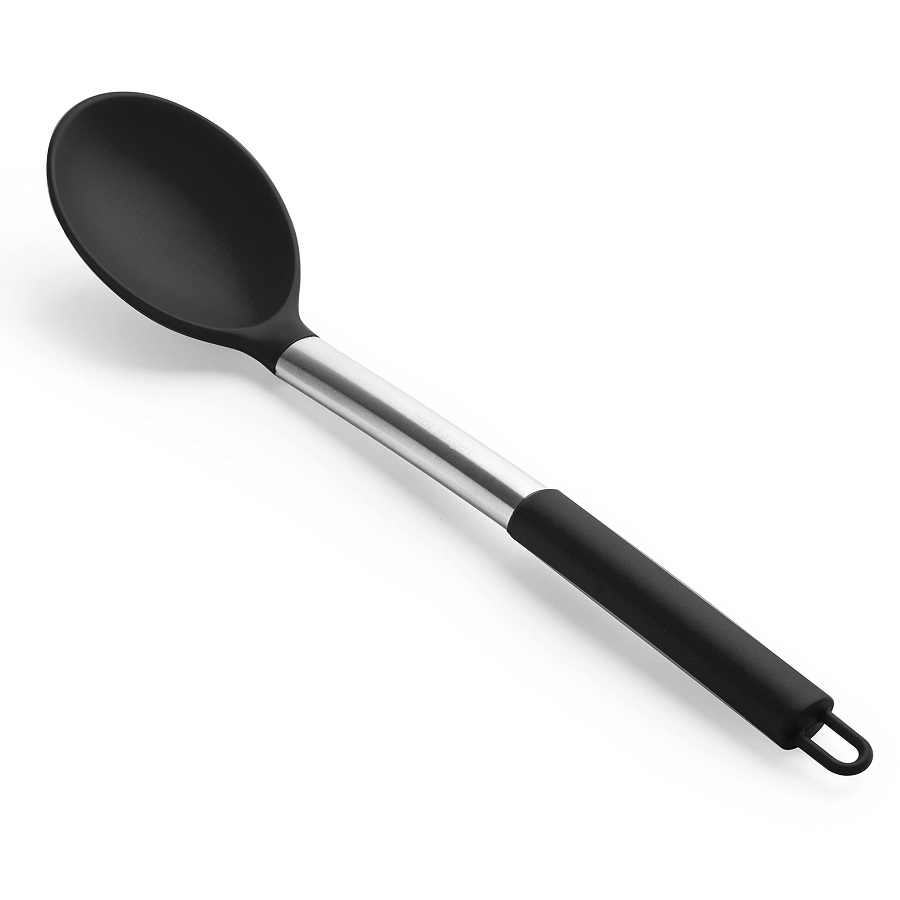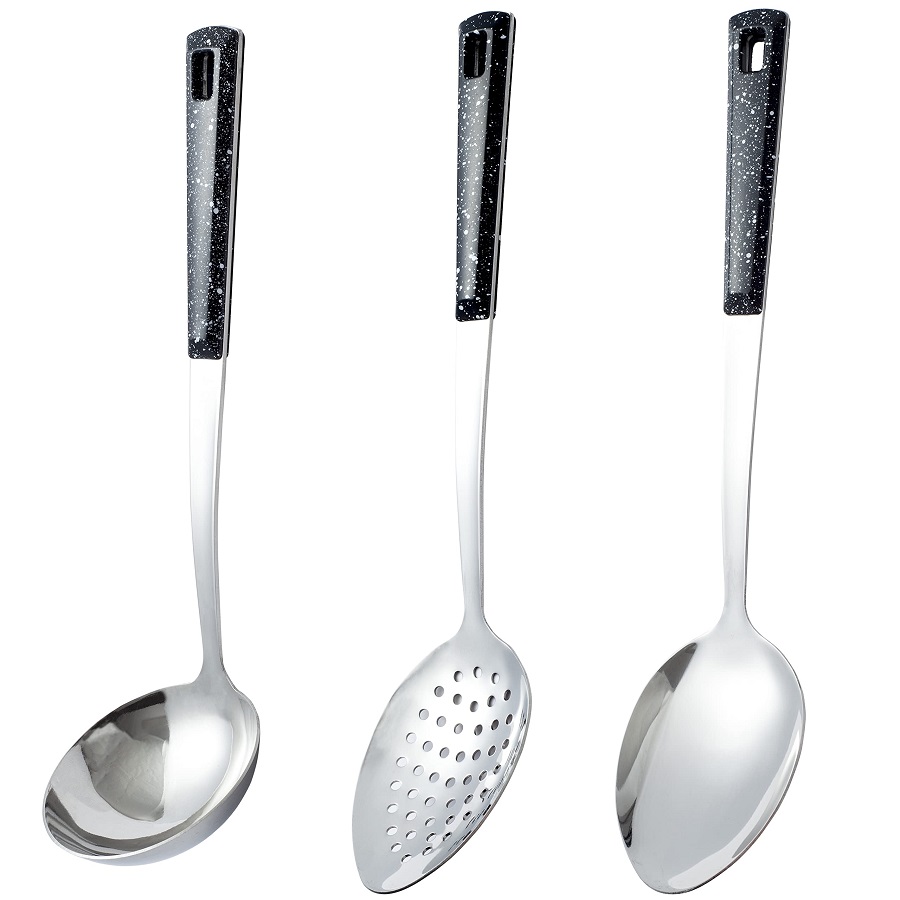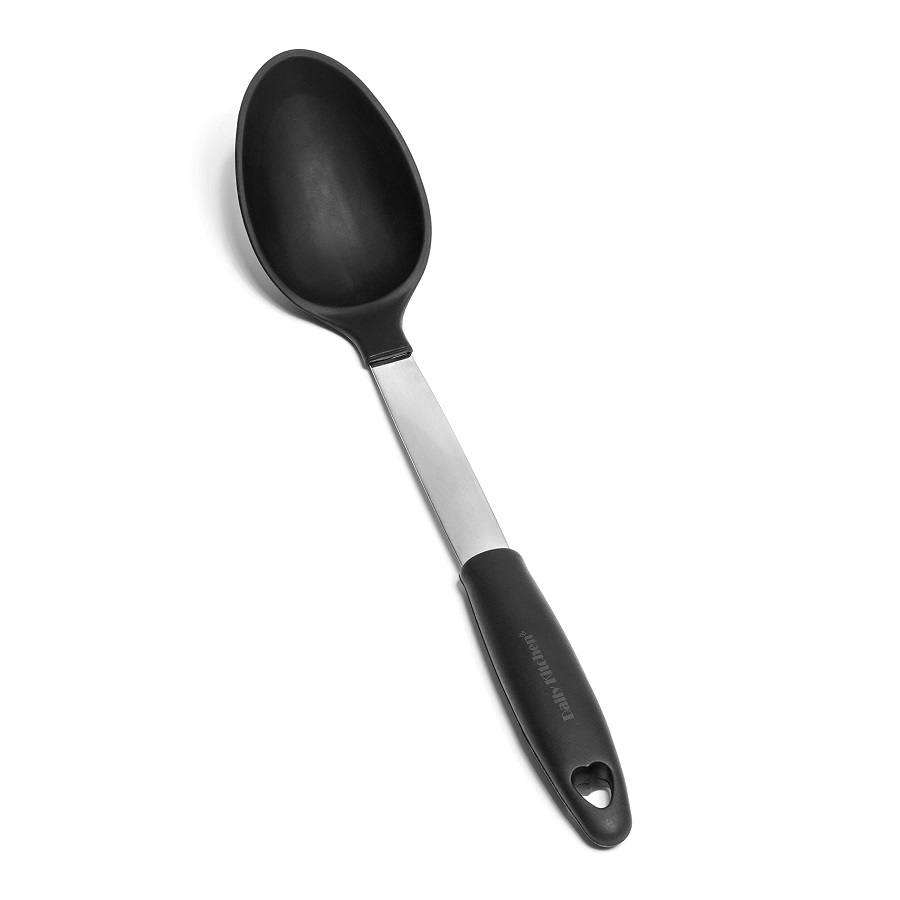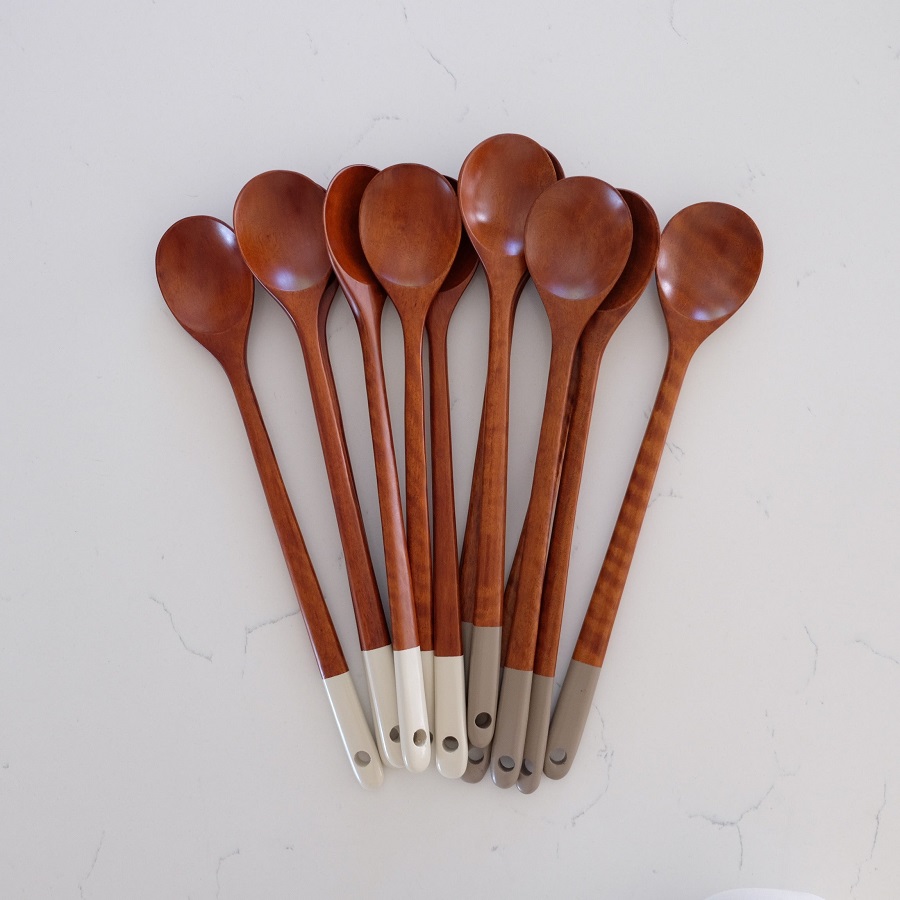Introduction
Cooking spoon – In the symphony of culinary arts, every instrument plays a crucial role, and among them, the humble cooking spoon stands as a conductor’s baton. It stirs, flips, sautés, and serves, making it an indispensable tool in any cook’s arsenal. But with so many options available on the market, how do you choose the perfect cooking spoon that complements your style and enhances your kitchen experience? This comprehensive guide delves into the world of cooking spoons, exploring materials, design, ergonomics, and maintenance to ensure that your next stir is nothing short of masterful.

Materials Matter
Cooking spoons come in a variety of materials, each with its own set of advantages and disadvantages:
- Wood: Known for its warmth and traditional appeal, wooden spoons are gentle on non-stick pans and won’t scratch surfaces. They’re also heat-resistant and won’t conduct heat, protecting your hands. However, they require more care to prevent warping and can harbor bacteria if not properly dried after washing.
- Stainless Steel: Durable and easy to clean, stainless steel spoons can handle high heat and rigorous use without rusting or corroding. Their sleek look suits modern kitchens, but they can be heavy and might scratch delicate cookware.
- Silicone: Offering flexibility and heat resistance up to high temperatures, silicone spoons are ideal for non-stick cookware. They’re non-toxic, easy to clean, and come in a range of colors. However, they may not provide the same level of control as wooden or metal spoons.
- Metal (Other than Stainless Steel): Copper and aluminum spoons are less common due to their reactive nature with certain foods, but they can add a touch of elegance to your kitchenware.
Design Diversity
The shape and size of a spoon significantly impact its functionality:
- Spatulas vs. Ladles vs. Mixing Spoons: Spatulas are flat and wide, great for flipping and scraping. Ladles have deep bowls for serving soups or sauces, while mixing spoons usually have a rounded bowl for stirring and blending ingredients.
- Handle Length: Longer handles keep your hands away from heat sources, ideal for deep pots or boiling liquids. Shorter handles offer better control for shallow pans or small containers.
- Edges and Corners: Rounded edges are gentler on non-stick surfaces, whereas squared-off edges can scrape and stir more vigorously.
Ergonomics for Comfort
Using a spoon for extended periods requires comfort:
- Handle Design: Look for spoons with ergonomic grips or contours that fit naturally in your hand to reduce fatigue.
- Weight Balance: A well-balanced spoon distributes weight evenly between the head and the handle, making it easier to manipulate.
Maintenance Matters
Easy maintenance ensures longevity:
- Cleaning: Wooden spoons should be hand washed and dried immediately; stainless steel and silicone can usually go in the dishwasher.
- Sanitizing: Regularly sanitize your spoons, especially wooden ones, to prevent bacterial growth.
- Storage: Store spoons in a dry place to avoid moisture accumulation, which can lead to warping or bacterial growth.
Personal Preferences and Specialized Needs
Consider your cooking habits and preferences:
- Versatility: If you cook a wide variety of dishes, a set of spoons in different sizes and materials can cover all your needs.
- Special Diets: For those on gluten-free diets, having a dedicated set of spoons to avoid cross-contamination is crucial.
- Aesthetics: Your choice of spoon can also reflect your personal style, from rustic wooden spoons to sleek, modern designs.

Types of Cooking Spoons
- Serving Spoon: Characterized by a large, deep bowl, serving spoons are perfect for dishing out portions of stews, sauces, and casseroles. They often have a longer handle to reach the bottom of deep pots.
- Slotted Spoon: Ideal for straining liquids from foods like pasta or vegetables, slotted spoons let you lift items from boiling water or broth without excess moisture.
- Solid Spoon: A versatile workhorse in the kitchen, solid spoons are used for stirring, mixing, and tasting. Their rounded shape fits well into corners of pans, ensuring thorough mixing.
- Ladles: With a larger, deeper bowl than most spoons, ladles are designed for portioning out soups, broths, and sauces. They typically come with a long handle to reach into deep containers.
- Spatula Spoon: Combining the functions of a spatula and a spoon, this hybrid tool is great for scraping the bottom of pans, flipping delicate foods, and stirring sauces.
Materials Matter
- Stainless Steel: Durable and easy to clean, stainless steel spoons are resistant to rust and heat. They are ideal for high-temperature cooking and can last a lifetime.
- Wooden: Offering a classic aesthetic and gentle on non-stick surfaces, wooden spoons do not conduct heat, protecting hands from burns. However, they require careful hand washing and drying to prevent cracking or warping.
- Silicone: Heat-resistant, non-stick friendly, and available in a range of vibrant colors, silicone spoons are flexible and gentle on cookware. They’re also dishwasher safe, making them low maintenance.
- Melamine/Plastic: Lightweight and affordable, these spoons are great for casual use but may not withstand high temperatures and can scratch non-stick pans.
Essential Techniques
- The Stir: To prevent sticking and ensure even cooking, use a gentle figure-eight motion when stirring. This technique ensures all parts of the pan receive equal attention.
- The Fold: When combining delicate ingredients like whipped cream into a batter, use a spatula spoon to gently fold from the bottom up, preserving the airiness.
- The Scoop and Strain: With a slotted spoon, swiftly scoop food from liquids, allowing excess moisture to drain back into the pot before transferring it to a serving dish.
- The Resting Position: When not in use, rest the spoon handle on the rim of the pot or bowl, ensuring the head is not touching the countertop or inside the food, maintaining hygiene.
Care and Maintenance
- Cleaning: Follow the manufacturer’s guidelines. Most metal and silicone spoons are dishwasher safe, while wooden spoons should be washed by hand with mild soap and dried immediately.
- Sanitizing: Periodically sanitize spoons, especially wooden ones, by soaking them in a solution of water and vinegar or using a food-safe sanitizer.
- Storage: Avoid stacking spoons haphazardly; instead, hang them on hooks or store them in a utensil drawer organizer to maintain their shape and prevent scratches.

The Classic Wooden Spoon – The Heart of Every Kitchen
Our journey begins with the iconic wooden spoon, a staple in kitchens across cultures. Its natural material is gentle on pots and pans, preventing scratches while absorbing minimal heat, making it ideal for prolonged stirring tasks. Variations in size and shape—such as the deep bowl of a serving spoon or the slender handle of a sauté spoon—highlight its adaptability, underscoring why it remains a beloved choice among chefs and home cooks alike.
Silicone Innovations – The Fusion of Tradition and Technology
As we progress, silicone spoons enter the stage, marrying the comfort of a soft grip with the heat resistance and non-stick properties demanded by modern cookware. Their vibrant colors and flexible forms cater to both functional and aesthetic needs, especially in instances where maintaining the integrity of delicate coatings or sensitive surfaces is paramount. These spoons have revolutionized the way we mix, fold, and stir without compromising the quality of our cookware or ingredients.
The Precision of Stainless Steel – A Chef’s Trusty Companion
Stainless steel spoons bring a touch of sophistication and durability to the mix. Their sleek design not only withstands high temperatures but also ensures hygienic food handling. From slotted spoons for draining liquids to long-handled versions reaching deep into stockpots, these tools exhibit precision and control, making them indispensable for professional kitchens and serious home chefs alike.
Specialized Spoons for Unique Tasks
Delving deeper, we encounter an array of specialized spoons tailored for niche culinary tasks. The mellifluous curves of a jam spoon designed for smooth spreading, the slotted skimmer spoon perfect for lifting foods from boiling water, and the intricately pierced design of a bouillon spoon allowing just enough liquid through for savoring broths—each exemplifies the thoughtfulness invested in crafting tools that elevate cooking to an art form.
Conclusion
Choosing the perfect cooking spoon is about marrying practicality with personal preference. By considering the material, design, ergonomics, maintenance, and your unique cooking needs, you can equip yourself with a spoon that not only performs flawlessly but also brings joy to your culinary adventures. Whether you’re a professional chef or an enthusiastic home cook, mastering the art of choosing the right spoon elevates every dish from ordinary to extraordinary. Happy cooking!

